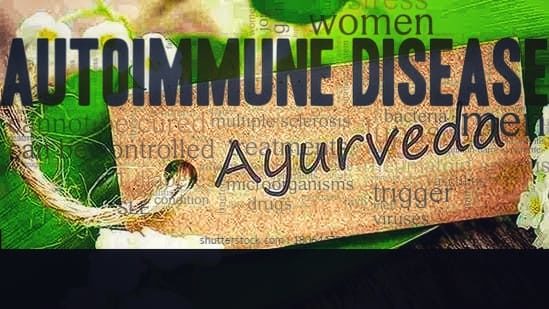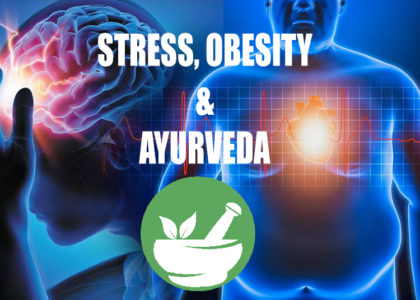Dear readers,
Today when society feels need of counselling and psychotherapies due to increase in psychological problems, it is going to be interesting to know how Ayurveda has described it thousands of years ago.
Ayurveda has given immense importance to manas i.e .mind. So, the one with the balanced mind, body and soul is a healthy person according to Ayurveda.
Ayurveda has different types of treatment modalities. One of them is trividh chikitsa, which has following subtypes.
1. Yuktivypashraya chikitsa – It includes all the medicines &/ panchakarma therapies given by the Vaidya after proper analysis of patient and his diseased body (dosha, dushya, samprapti ). Here importance is given to the body as compared to mind & soul.
2. Daivavyapashraya chikitsa– Ayurveda believes that certain diseases are result of one’s karma. It is said that disrespect of gurus or parents, hurting/killing animals etc. are the karmas that can give rise to certain physical or psychological disorders. Here treatment includes mantra chanting, yagyas, wearing particular gems/ stones (mantra, hom-havan, manidharana), fasting, offerings, prayers etc.
3. Sattvavajaya chikitsa– Here main focus of treatment is on mind. Counselling and different psychotherapies are part of this treatment.
We have seen mantra chikitsa in earlier blog. In this blog I am giving overview of what exactly sattvavajaya chikitsa is.
Ayurveda offer treatments with different techniques. Thousands of years ago Ayurveda knew that a person needs psychological assistance to stay healthy. So, this sattvavajaya chikitsa has been propagated by Charaka in Charaka Samhita. (सत्वावजय: पुनर्हितेभ्यो: अर्थेभ्यो मनोनिग्रह:| cha.Su.11/54)
Satva = manas(mind)
Avajaya = win/ control
So, in short, it is a kind of treatment where control over mind is achieved.
When does one’s mind loses control? There are many reasons. Few of them are –
· Over expectations from people around
· Wrong or negative thought process
· Mental trauma (ex. Loss of beloved person)
· Suppression of emotions
· Denial to stay in present (constant thinking of past, or of future)
· Strained relationships
· fear
· Stress
· Over anxiousness
We can add many more to the above list. These can be summarized in the following groups according to Ayurveda.
Basic causes of mental diseases-
vpradnyaparadhah (volitional stressors/acts of offence)- pradnya is wisdom, understanding & intelligence. The defective application of pradnya is known as pradnyaparadhah. It makes a person violate the laws or code of conduct.
vAhita indriyarthah (sensory stressors) – grossly it can be compared to cognitive process. Here indriya (sense organ) comes in to samyoga (contact)with its artha (object)and results in perception of that object. This way we get knowledge through all five sensory organs (eyes-light, vision, ears-sound, tongue-taste, nose-smell & skin-touch). When this contact is excessive/deficient/ erroneous in nature, it is considered as ahita indriyarthah which leads to many diseases as the sensory organs become incompatible to make perception possible.
vKalah (seasonal stressors) – it includes wrong manifestation/under manifestation/over manifestation of temporal changes in relation to different seasons. Unexpected changes in season results in diseases.
Mind has 3 constituents. Sattva (balance), rajas(arrogance) and tamas(indolence). Last two are considered as doshas of mind are responsible for mental illnesses.
All these above factors cause imbalance of raja and tama gunas of manas.
Sattvavajaya chikitsa focuses on managing our thoughts and our actions through counselling and different psychotherapies. It is all about restraining mind (manonigraha)
Charaka says,
Spiritual knowledge, philosophy, concentration, remembrance and courage in adversity are the tools to achieve manonigraha.
Sadvrutta (right behavior), swasthavrutta (good health) and yoga are the major contributors of sattvavajaya chikitsa.
Ayurveda thinks every person as a part of the society and culture. So sadvrutta includes taking care of our personal as well as social behavior. To make this process easy, it has merged these therapies in different festivals, rituals and cultural activities. Gathering together for festive season, talking freely with each other, indulging in activities or rituals together definitely make us behave responsibly, adjust with each other, adapt the situation, sharing feelings with one another, learn new things. All these ultimately end up in good mental/emotional status.
Swasthavrutta includes steps to be taken to stay physically healthy. Dinacharya (daily chores)and ritucharya (lifestyle in accordance with season) are very important. Importance of exercise, good life style and proper diet (satwik aahara) is to be followed as healthy body has healthy mind.
Yoga as we all know is very important tool to connect body, mind and soul. Yoga initiates our journey towards self-realization with consistent and guided practice of meditation and pranayama. We all know its benefits for healthy body.
Sattvajaya chikitsa has various methods which help controlling manas which is moving towards ahita artha. Here ahita artha means distractible, unwholesome objects, thoughts or ideas.
a. It is about disciplining mind and creating balance between dhi (intellect), dhriti (courage) and smriti (memory).
b.There are 5 methods by which we can treat a patient:
1. Chintya (inculcating right thought process)
2. Vicharya (creating right concepts or ideas)
3. Uhya (channeling presumptions)
4. Dhyeya (setting right objectives)
5. Sankalpa (right guidance for right decision)
c. It is a psychological as well as spiritual approach of treatment.
So, guru shishya parampara (mentor & his disciple) in vedic culture plays vital role in sattvavajaya chikitsa. Shishya-a common man- shares his feelings, admits mistakes, expresses guilt in front of spiritual guru, who is very much advanced in sadhana (spiritual practices) and is a philosopher too. This gives shishya assurance, positive thought process, offers empathy & emotional support, help in right decision and sets right goals in life by the grace and interaction with guru or we may say counselling with guru.
Guru-shishya relationship is said to be of a friend, philosopher and guide
d. One more part of this treatment is substitution of emotions with the opposite ones. They are kama, krodha, lobha, moha, mada, matsara, bhaya
e. We can approach differently as per requirement of patient. Not every person is manageable by educative approach (vidnyan). So, one has to think of supportive/ courageous approach (dhairya) or understanding oriented approach (dnyana) or cognitive approach (smriti) or philosophical approach (aatmadyana)also.
Outcome of all these techniques and approaches can be summarized as-
· Uplifting intelligence
· Boosting confidence
· Emotional maturity
· Sense of responsibility
· Adaptability
· Coping skills
· Mental balance in stressful situation
· Mental peace
· Restraining mind from unwanted object/ situation.
· Knowing importance of self-realization.
Bhagvadgita and sattvavajaya chikitsa:
Bhagvadgita itself is an encyclopedia of psychology. Amongst 18 chapters, 2nd chapter sankhya yoga reveals how to control mind. Some abstracts from bhagvadgita which are related to sattvavajaya chikitsa are as follows-











